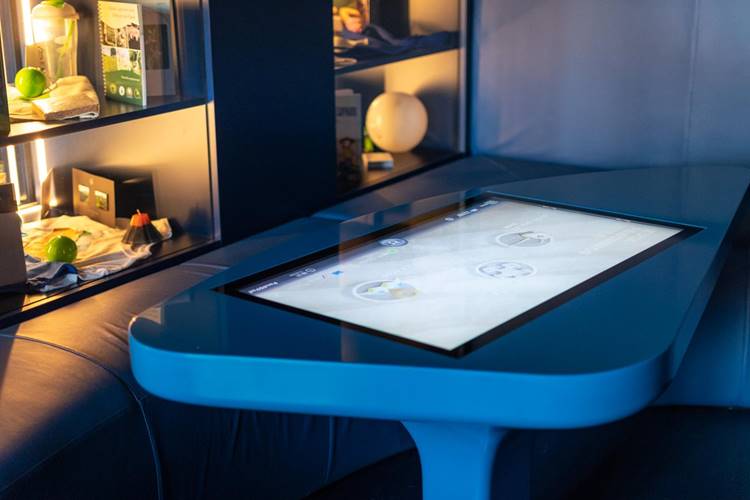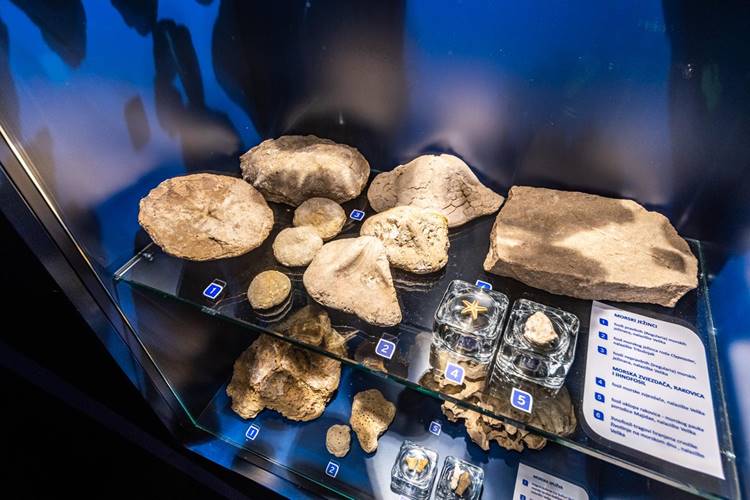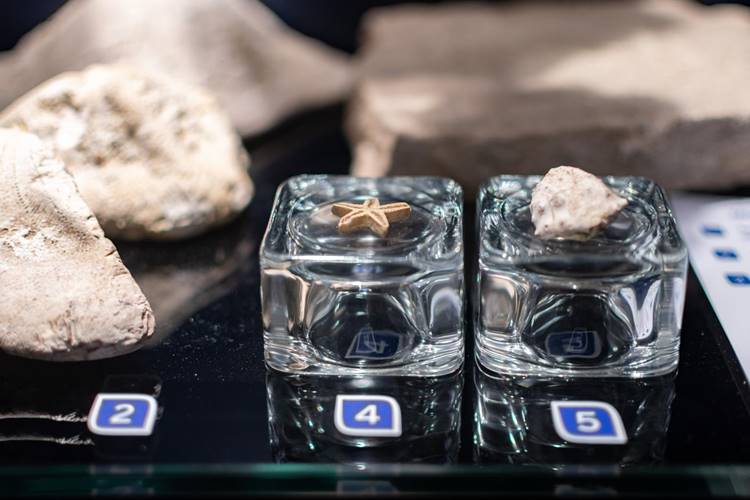Nature Park Papuk Culture and Arts
Multimedia exhibition for the House of the Pannonian Sea
The House of the Pannonian Sea is an example of a carefully designed and very professionally done project of building a complete exhibition based on a range of state-of-the-art multimedia solutions that together contribute to a fantastic educational experience. It is a visitor-educational center of the Papuk Nature Park arranged as part of the project "Geo stories of the UNESCO Geopark".
The story that takes place in the House is really bigger than imagination. Papuk was once, in the Miocene era, a "tropical" island, warm and attractive to species that do not live in modern era. Primarily oriented to school visitors, this exhibition provides interactivity from the first moment of visit with stories about life in the Miocene written in the rocks of Papuk. But this is not only a place for children, but also for all curious and knowledge-hungry people who want to visit this special exhibition.

The tour of the House of the Pannonian Sea begins with an introductory presentation on the life on planet Earth and fossils, and what they tell us about the environment of the past, with emphasis on the flora and fauna of the Pannonian Sea.
Background
Since valuable collections of fossils stored in the administrative building of the Papuk Nature Park were not presented to visitors in an adequate manner, the need for a multimedia solution that would tell a 16-million-year-old story in a modern way was expressed. Our contribution to the whole story was setting up a multimedia solution that would present natural beauties in an innovative way.
Challenge
The main challenge of this project was to create various multimedia solutions that would present the story of life in the Miocene written in the rocks of Papuk as realistically as possible. The landscaping activities included a presentation part inside the building, but also the creation of a website for visitors, all in the function of education and conducting various workshops on the topics of natural and cultural heritage of the Papuk Nature Park.
Our approach
PandoPad delivered the full set of multimedia and technical realizations of the House of the Pannonian Sea to the location. From the website, centrally managed multimedia system, all projection and screen editing and installation on site, visitor counting system on tablet, graphic and design solutions in the revival of the Miocene world, content production and application development.
Solutions
We supplied our PandoPad® WALL units with interactive screens, projector systems, an interactive screen on the floor of the "sandbox" hall, and an interactive game table with various applications.
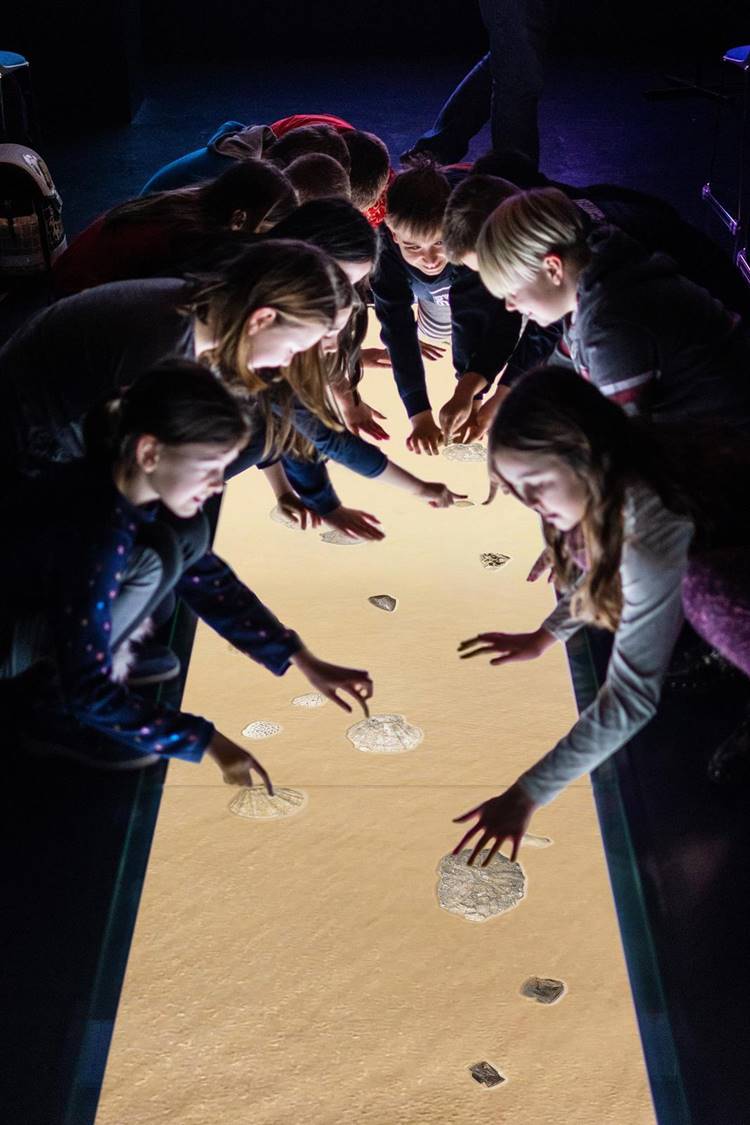
The presentation ends with a game played on the sandy shore of the Pannonian Sea, on the interactive floor of the room. After the visitors have been introduced to the main theme of the exhibition, the actual tour of the Pannonian Sea during the Miocene Epoch begins in the second hall.

The four walls of this hall feature a combination of interactive screens and real exhibits of fossils found on Papuk, which separately cover the sea floor, the coast, and the land during the Miocene, as well as Papuk today. The first interactive screen emulates the position of Papuk, the transition of lakes and the sea, and other events from 18 million years ago until today. In addition, by interacting with the visitor, the exhibition tells stories of the creatures that used to swim in the Pannonian Sea, which is visible from the displayed fossils.
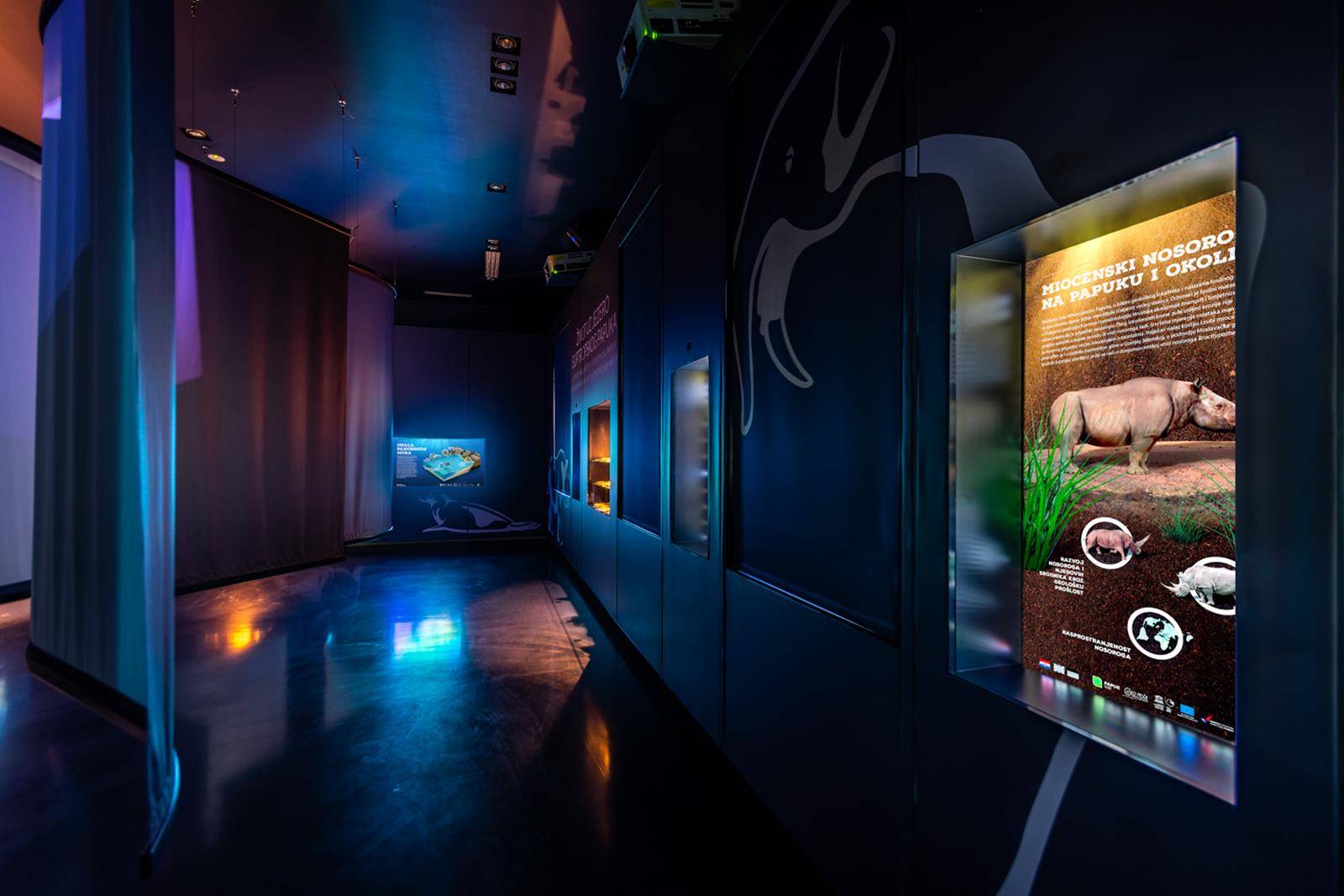
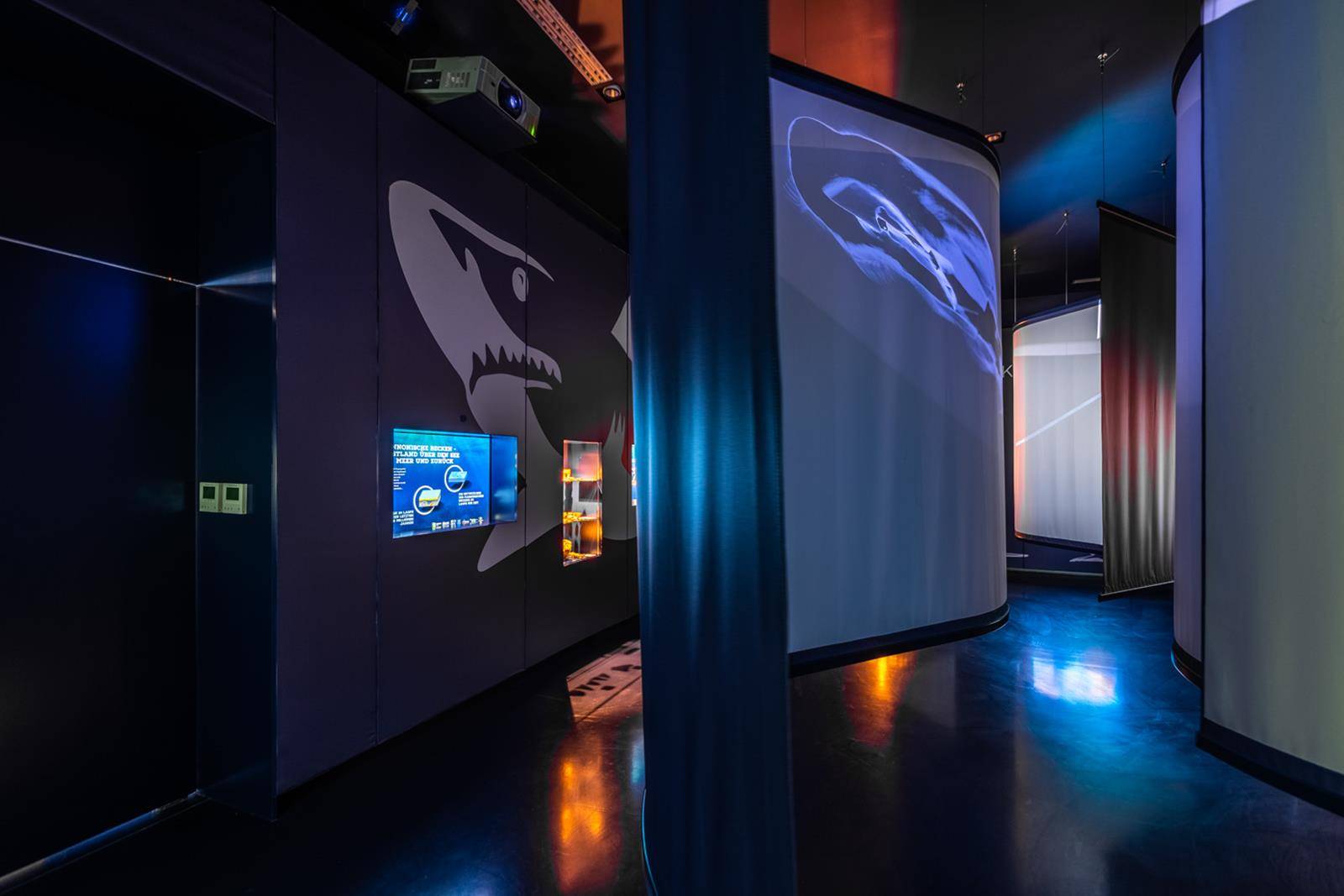
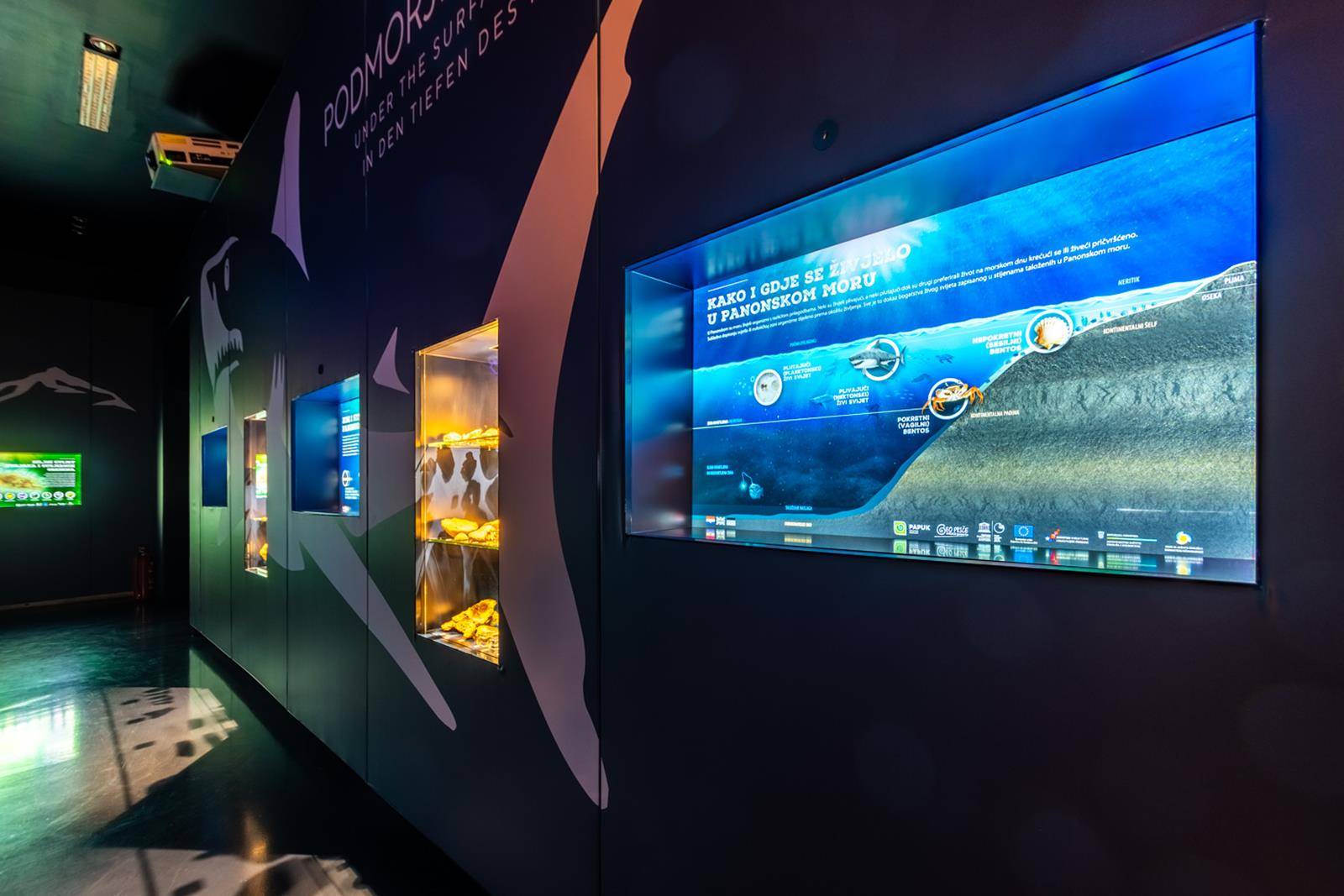
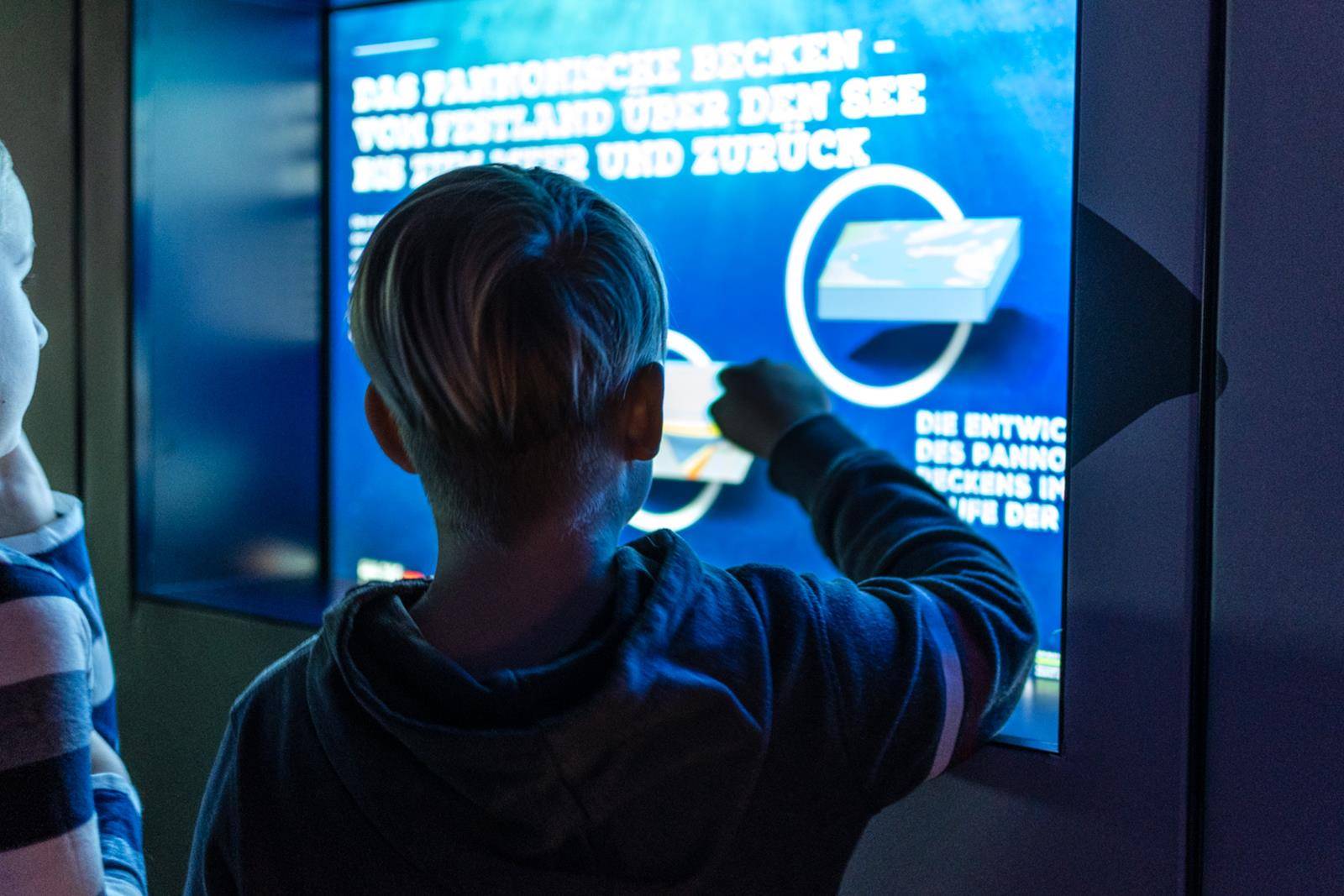
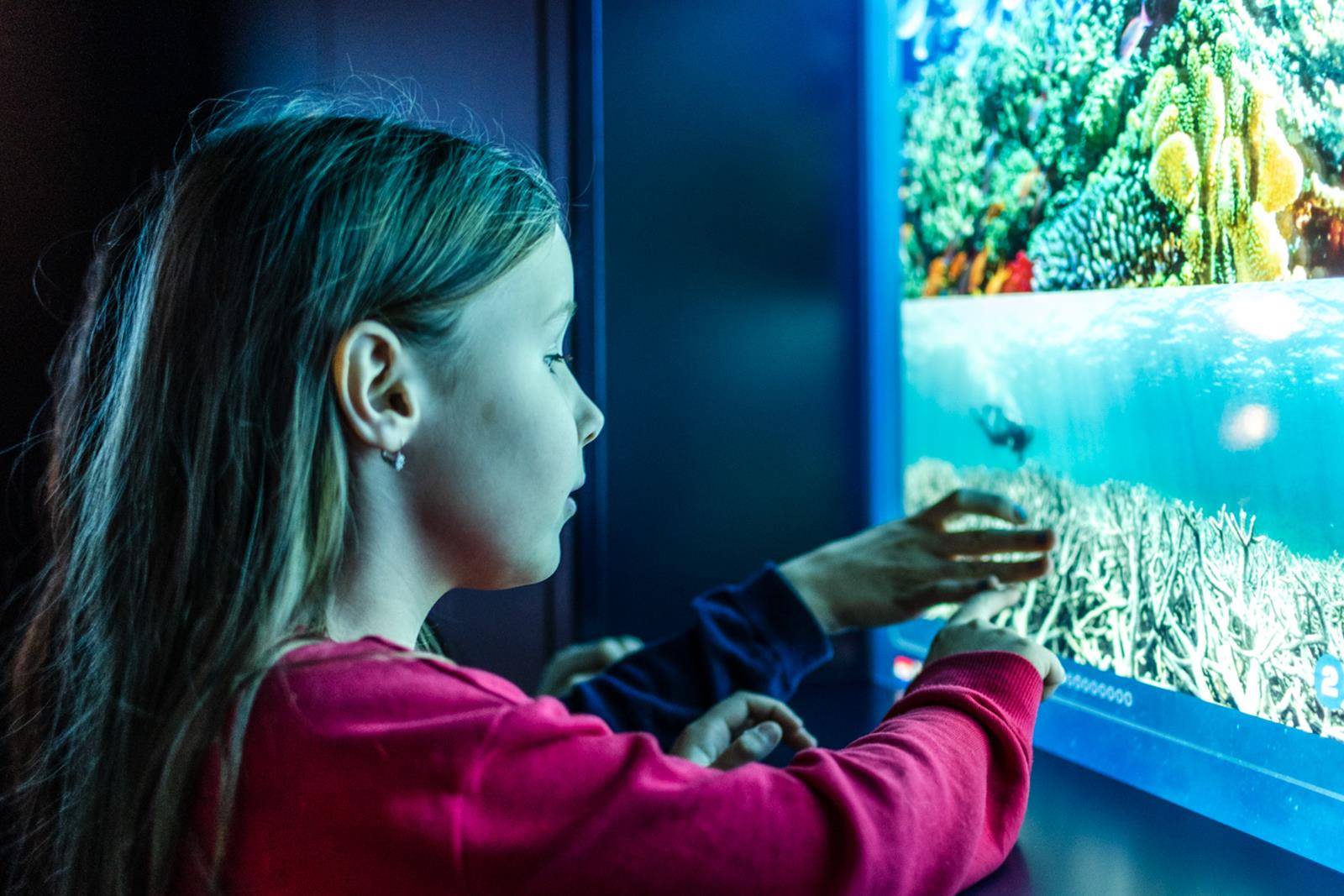
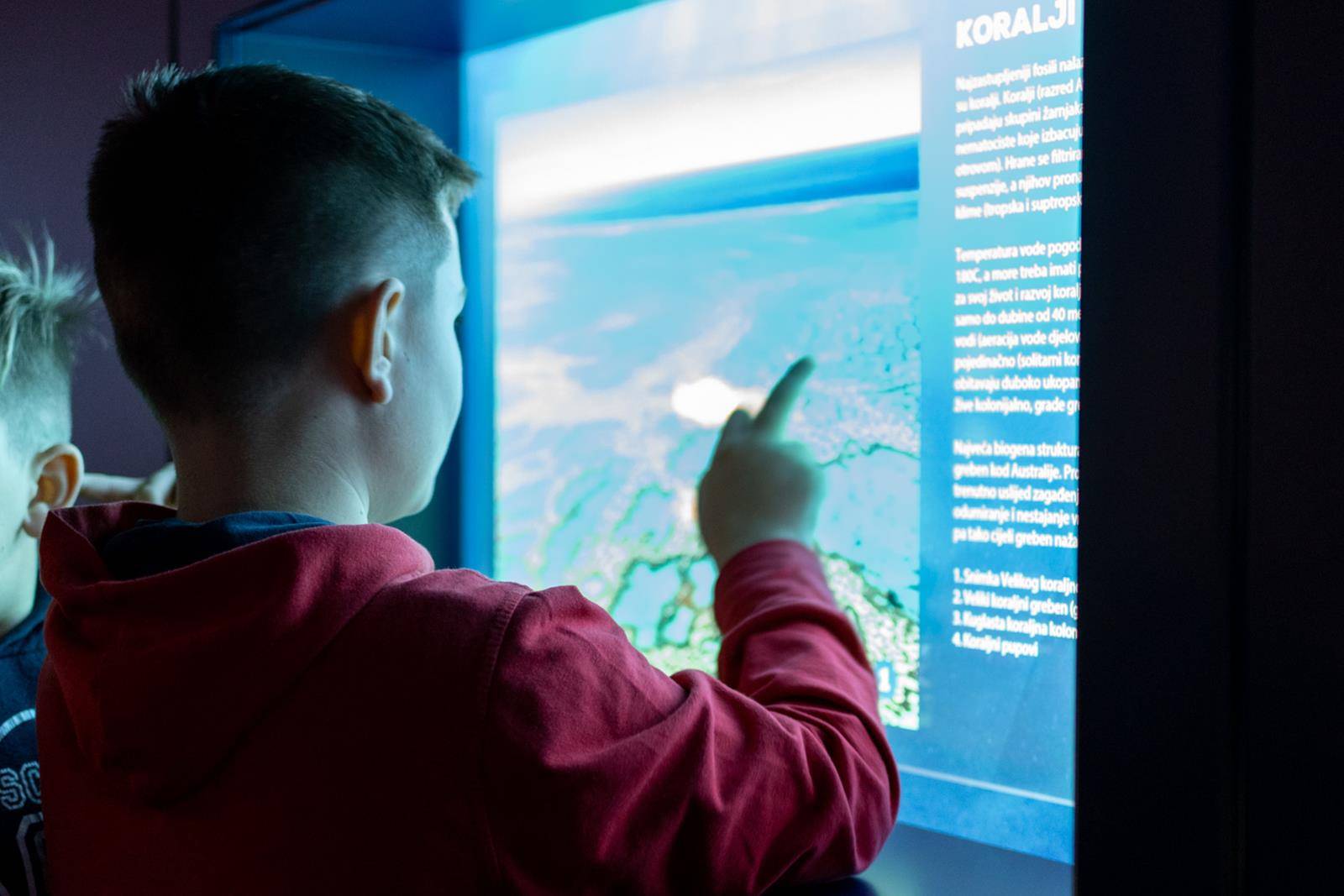
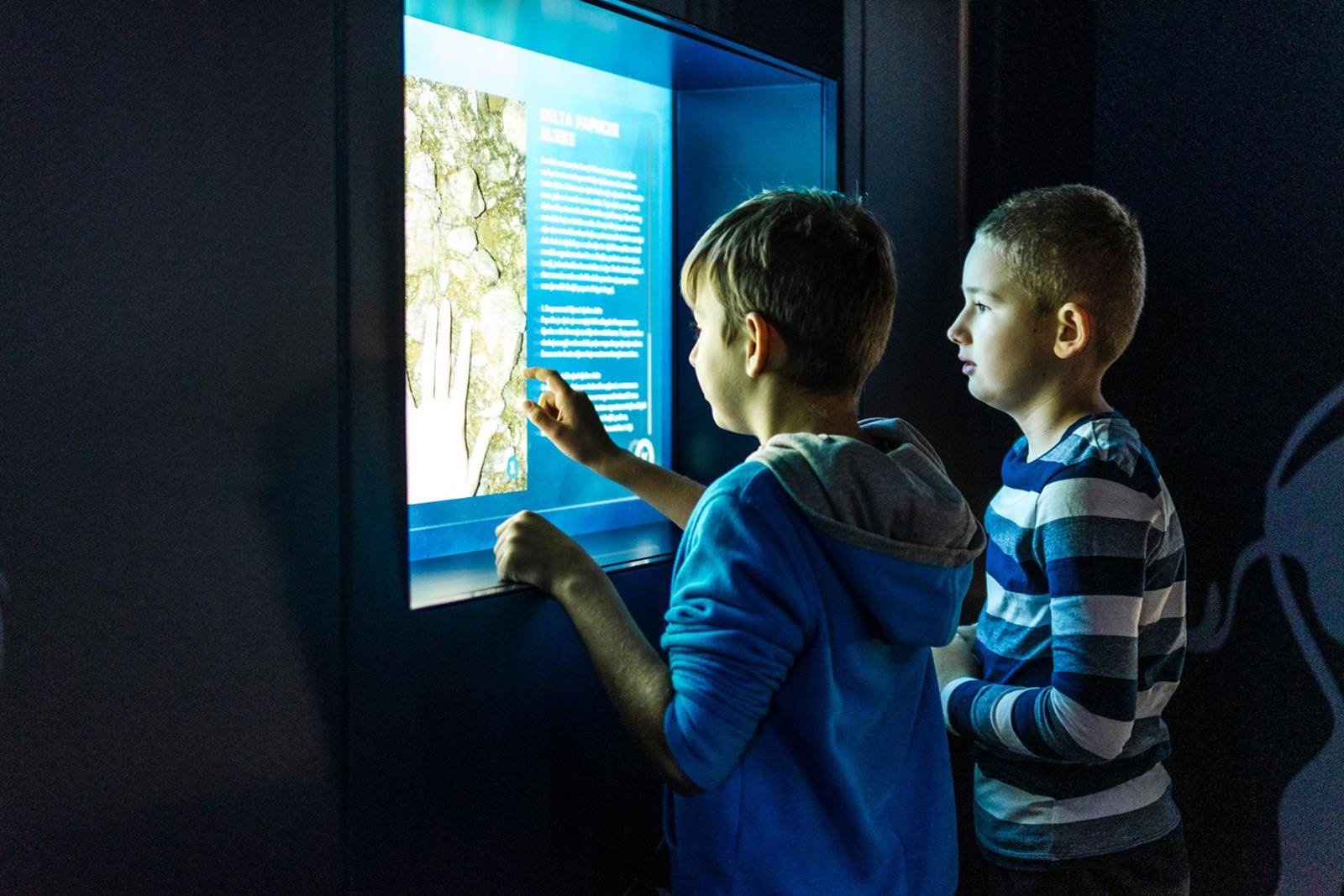
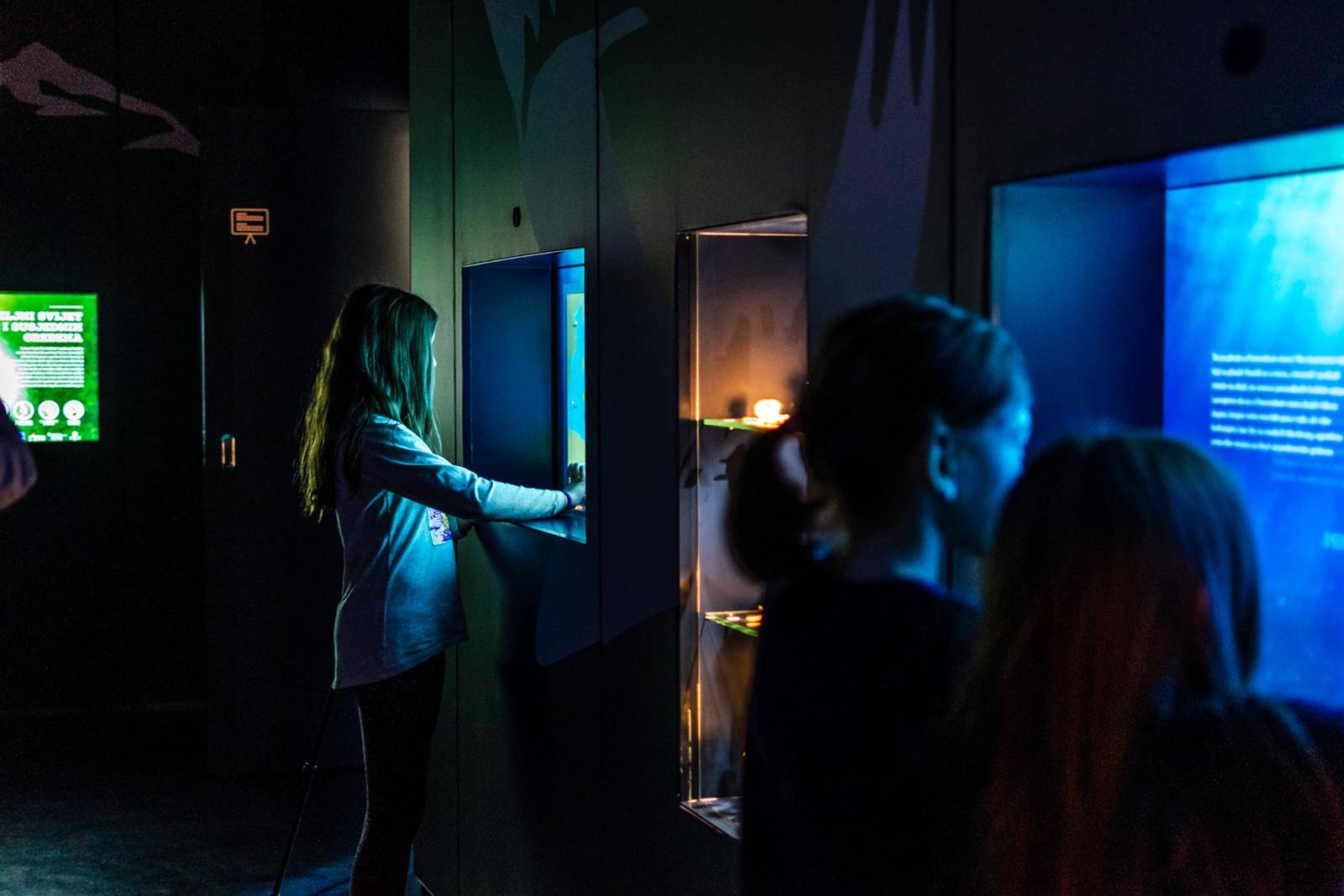
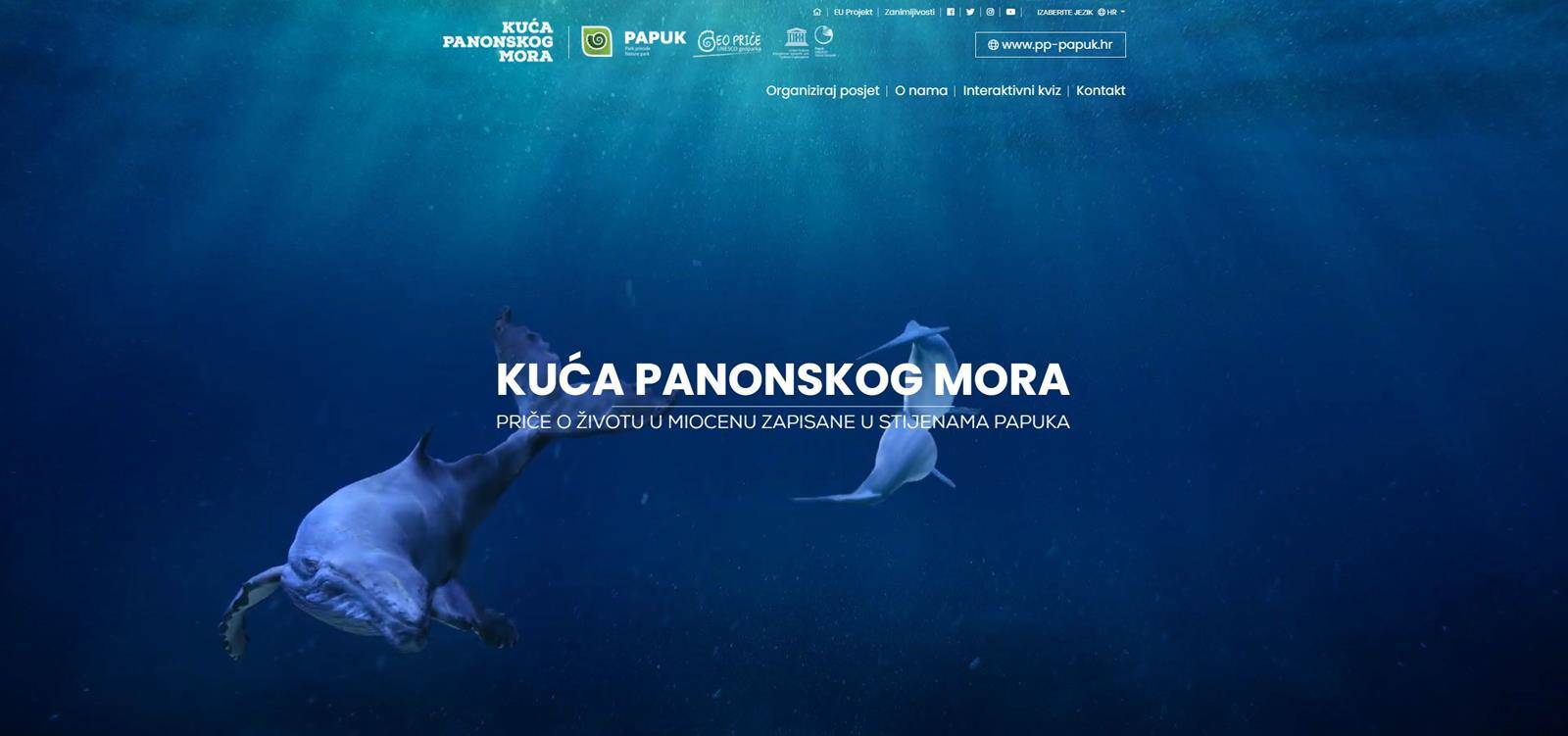
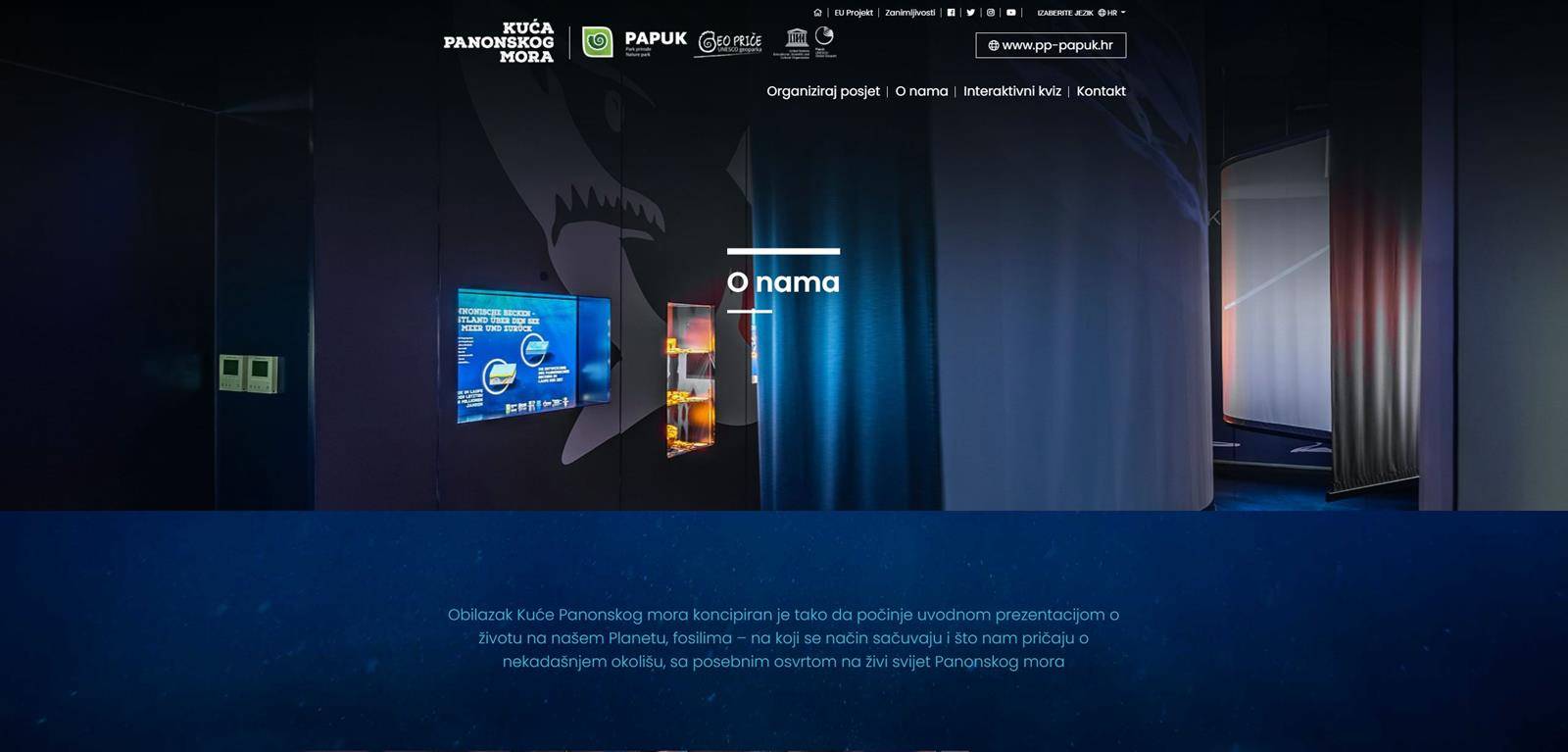
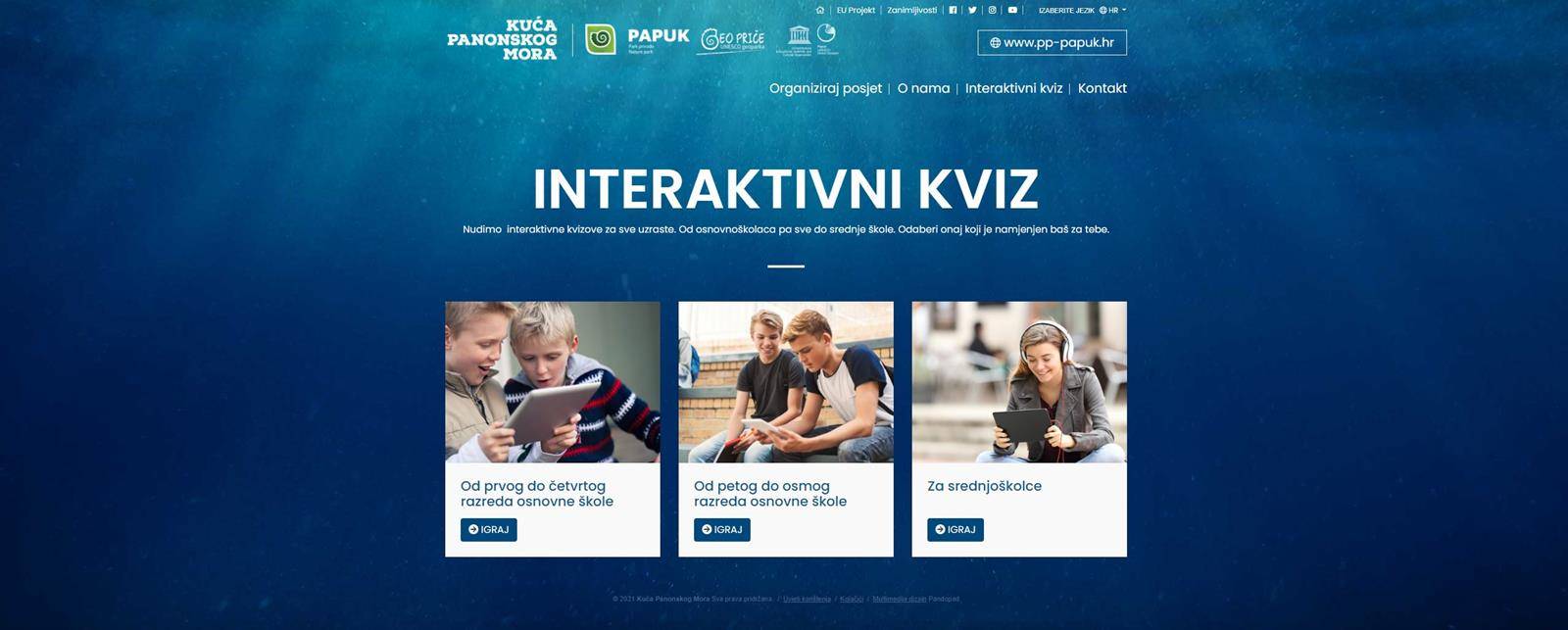
The finale of the interactive points in the hall is rounded off with a story about Papuk and how it looks today.
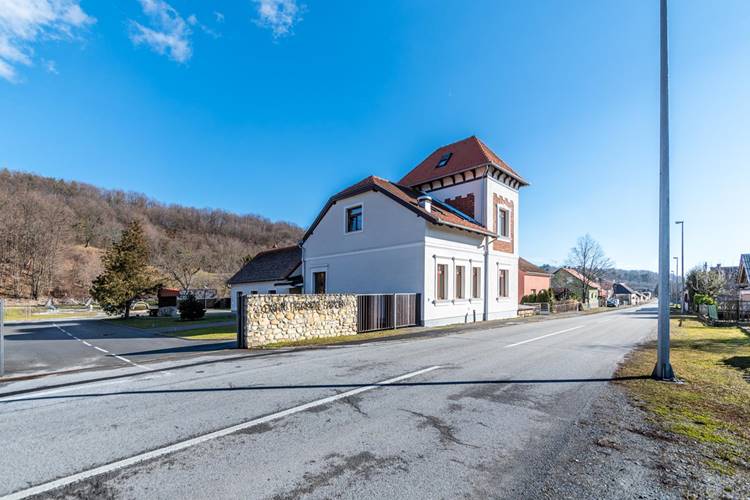
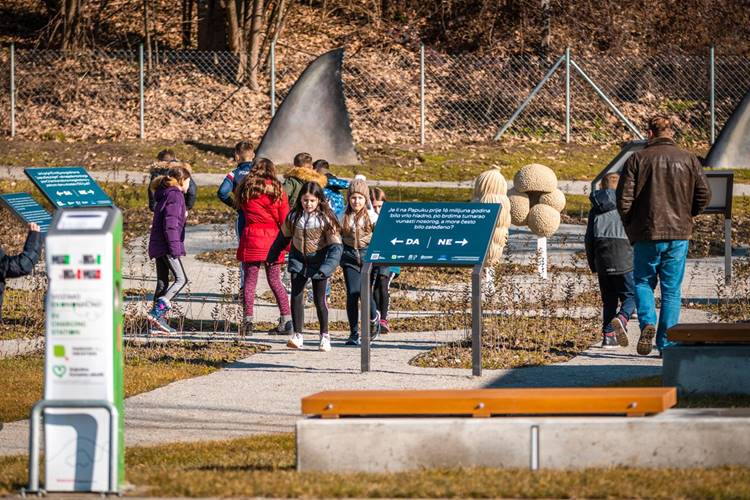
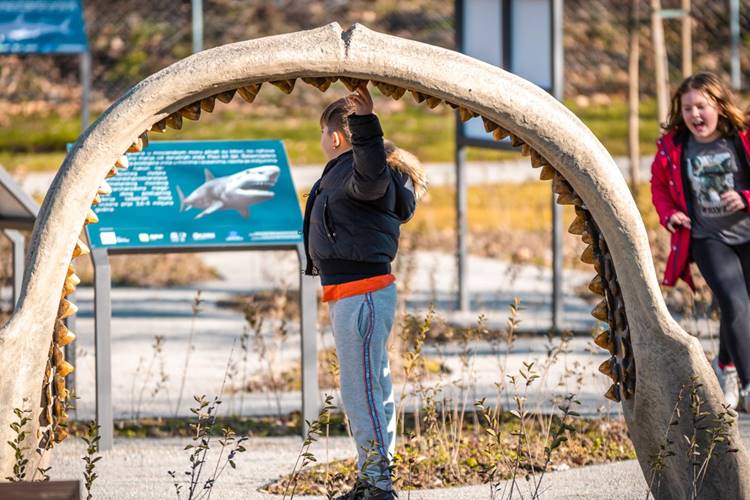
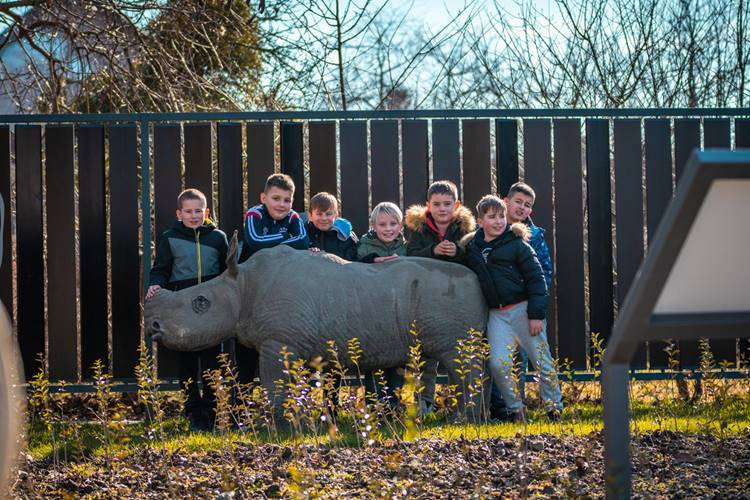
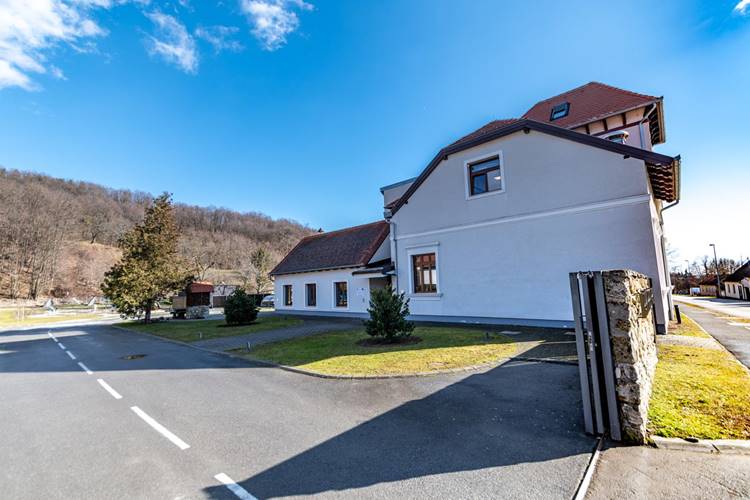
A new website has also been launched, which offers the possibility of planning visits, education, and presentations, as well as quizzes for different school ages. It is recommended to solve the quiz once before and once after the visit, thus immediately test the effect on the knowledge that this magical House has.
